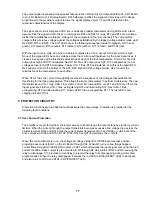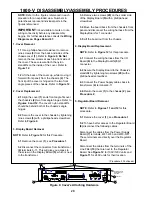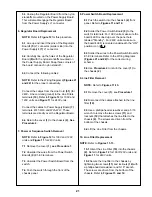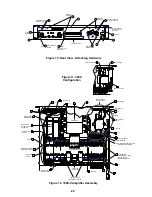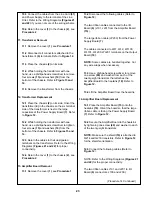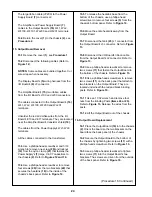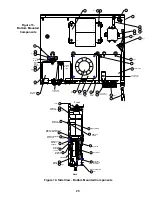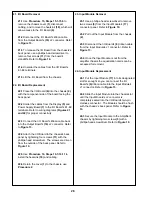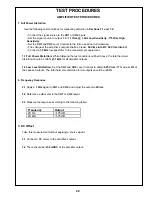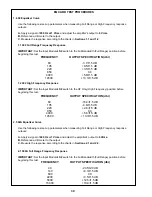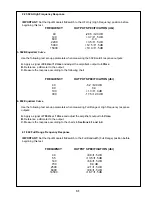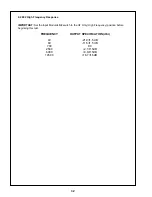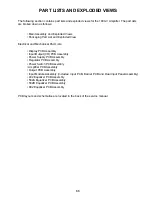
29
AMPLIFIER TEST PROCEDURES
1. Full Power Distortion
Use the following test conditions for measuring distortion in Sections 1.1 and 1.2:
• Connect the signal source to the CH1 or CH2 inputs
• Set the signal source to output 1.5
±
.1 Vrms @ 1 kHz Low Sensitivity, .775Vrms High
Sensitivity
• Set the CH1 and CH2 Level Controls to the full on position (full clockwise)
• The voltage at the amplifier's outputs shall be a least: 60 Vrms into 8
Ω
; 50 Vrms into 4
Ω
• Connect a 30 kHz low-pass filter to the measurement equipment
1.1 Full Power Distortion: While following the test conditions outlined above, the total harmonic
distortion should be
≤
.5% @ 1 kHz for all amplifier outputs.
1.2 Low Level Distortion: Set the CH1 and CH2 Level Controls to obtain 6.25 Vrms
±
1% across 4
Ω
at
the speaker outputs. The total harmonic distortion for all outputs should be
≤
0.1%.
2. Frequency Response
2.1 Apply a 1 kHz signal to CH1 and CH2, and adjust the output to 6Vrms.
2.2 Reference a dB meter to the CH1 or CH2 output.
2.3 Measure the response according to the following table:
3. DC Offset
Take this measurement without applying a source signal.
3.1 Connect a DC meter to the amplifier's output.
3.2 There should be
≤
50 mVDC at the amplifier output.
TEST PROCEDURES
Frequency
Output
20 Hz
±
.75 dB
20 kHz
±
.75 dB
Summary of Contents for 1800-V
Page 7: ...Figure 3 502A EQ Card HF Only Response Figure 4 502A EQ Card Full Frequency Response 7...
Page 8: ...Figure 6 802 EQ Card HF Only Response Figure 5 502B EQ Card Response 8...
Page 9: ...Figure 7 802 EQ Card Full Range Response 9...
Page 69: ...402 Equalizer Card Schematic 69...
Page 70: ...502A Equalizer Card Schematic 70...
Page 71: ...502B Equalizer Card Schematic 71...



